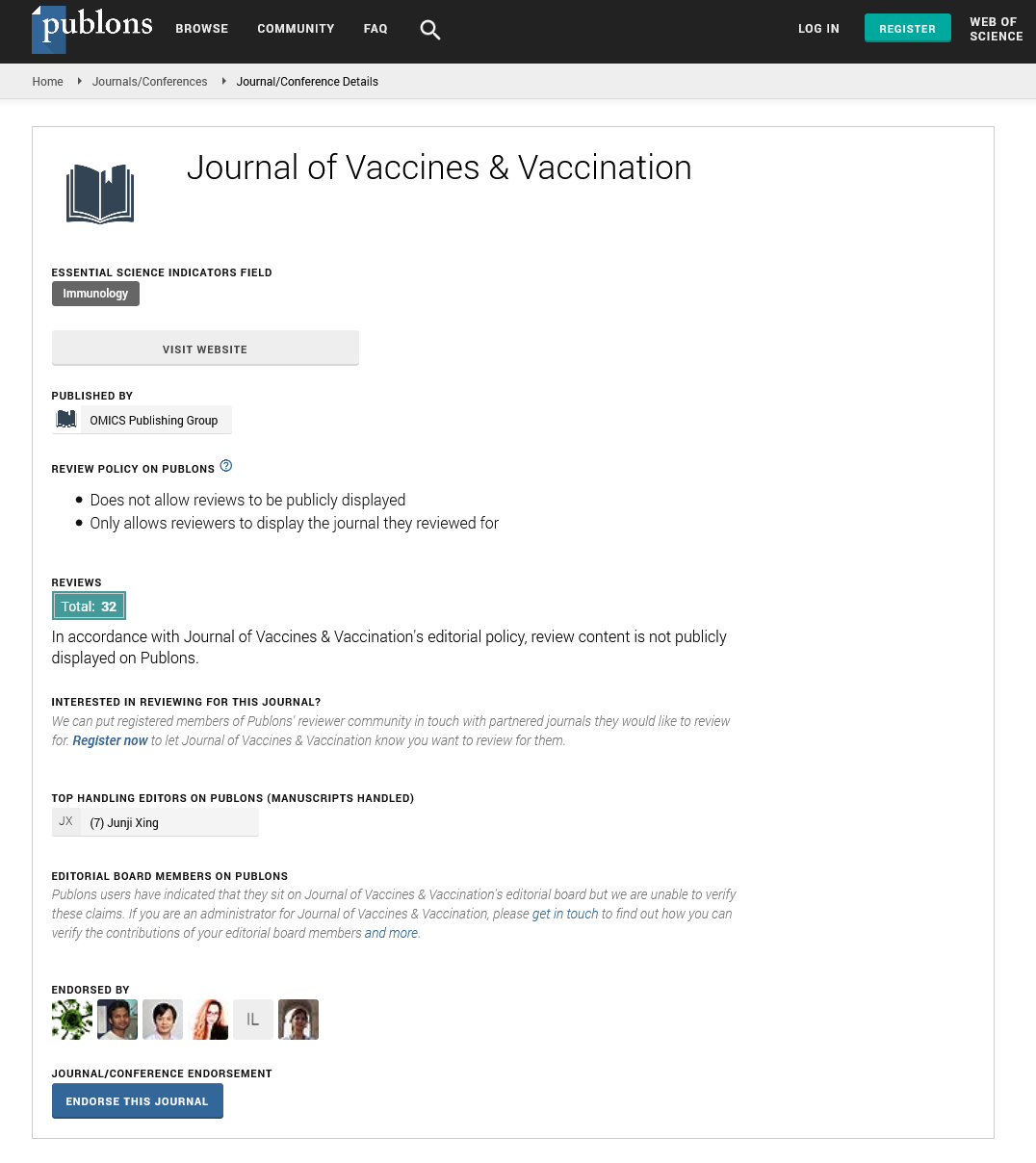Indexed In
- Academic Journals Database
- Open J Gate
- Genamics JournalSeek
- JournalTOCs
- China National Knowledge Infrastructure (CNKI)
- Scimago
- Ulrich's Periodicals Directory
- RefSeek
- Hamdard University
- EBSCO A-Z
- OCLC- WorldCat
- Publons
- MIAR
- University Grants Commission
- Geneva Foundation for Medical Education and Research
- Euro Pub
- Google Scholar
Useful Links
Share This Page
Open Access Journals
- Agri and Aquaculture
- Biochemistry
- Bioinformatics & Systems Biology
- Business & Management
- Chemistry
- Clinical Sciences
- Engineering
- Food & Nutrition
- General Science
- Genetics & Molecular Biology
- Immunology & Microbiology
- Medical Sciences
- Neuroscience & Psychology
- Nursing & Health Care
- Pharmaceutical Sciences
Changes on nasopharyngeal colonization associated to pneumococcal vaccination in Cuban children: follow up two years after clinical trial enrollment
29th International Conference on Vaccines and Immunization
March 19-20, 2018 | London, UK
Ninaldo Linares-Perez, Meiby Rodriguez, Mayelin Mirabal, Beatriz Paredes, Darielys Santana, Dagmar Garcia-Rivera, Yury Valdes-Balbin, V Verez-Bencomo, Maria F Casanova, Dunia Chavez and Maria E Toledo-Romaní
Finlay Vaccine Institute, Havana, Cuba
Tropical Medicine Institute �??Pedro Kour��, Cuba
University Pediatric Hospital �??Paquito González Cueto�?�, Cuba
Posters & Accepted Abstracts: J Vaccines Vaccin
Abstract:
Background & Aim: The impact of evaluation on pneumococcal NP carriages is included as part of the evaluation strategy of the new Cuban pneumococcal vaccine candidate (PCV7-T). We measure the changes associated to pneumococcal vaccination (one and two years after) in preschool children included in a randomized and currently still blinded control trial. Methods: 555 from 1135 children 1-5 year old were randomly selected for evaluation one-year after vaccination with PCV7-T or PREVNAR13® (control). 443 of the total, equally randomly selected, were evaluated after two years. Nasopharyngeal swabs were collected according to established protocols. Prevalence NP colonization global and by serotype was estimated. Individual and family risk factors were explored. Vaccination effectiveness was estimated using preventable fraction. Results: Global prevalence of NP colonization in children 1-5 y/o was reduced (32.3% to 9.0%; p<0.00) and due the seven common vaccine serotypes drop (15.6% to 2.2%; p<0.00) one-year post vaccination. After two-years, the prevalence for nonvaccine serotype increases (3.2% to 10.1%; p<0.00). Before immunization and one-year after, serotypes 19F, 6A, 23F and 19A were the most frequently isolated. After two-years a significant increase of 15B, 15C and 4 was detected. Day care attendance was identified as the main determinant (p=0.00) of NP colonization (OR 3.8; CI 1.3-16.3). The preventable fraction of NP vaccine type serotypes in vaccinated was 85.9% after one-year and 81.41 after two-year. Conclusion: Preliminary estimation of effectiveness of pneumococcal vaccination in Cuba supports the decision-making to vaccinate preschool children to impact the burden of NP colonization at population level.

